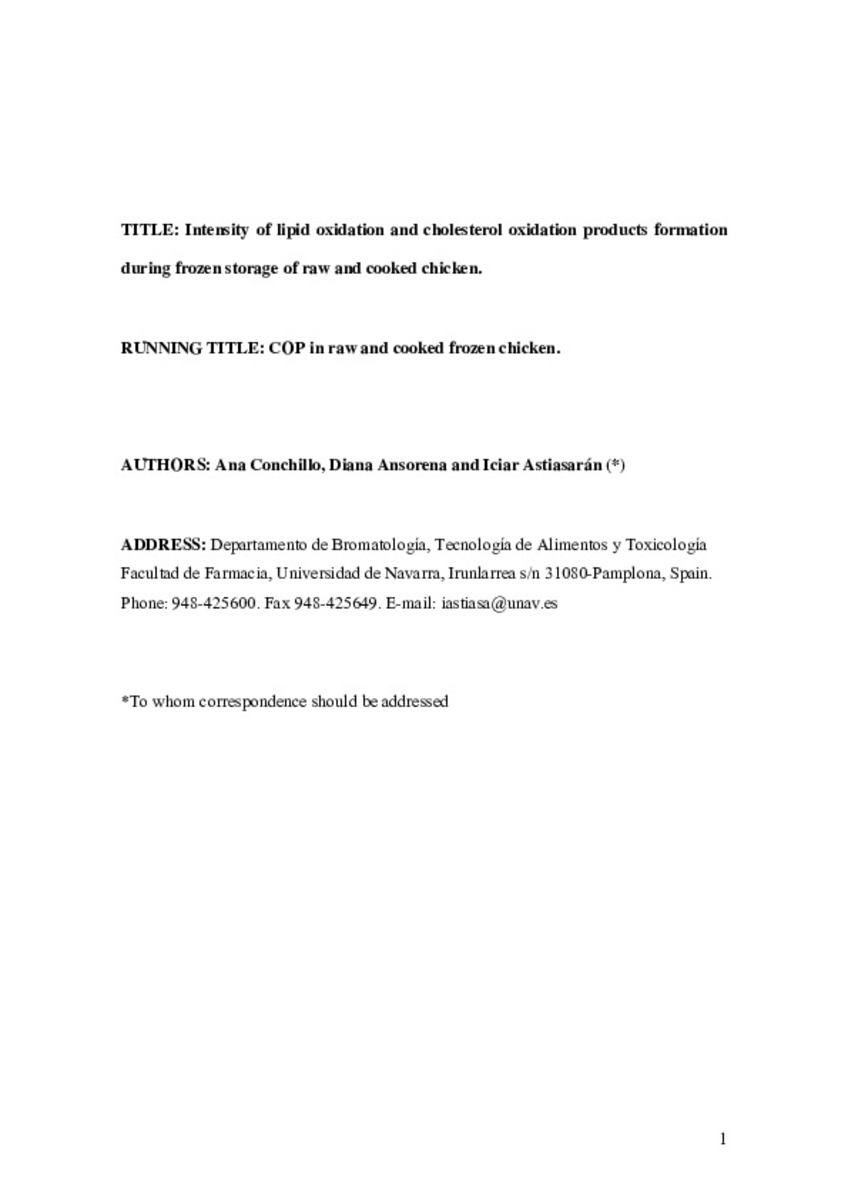Intensity of lipid oxidation and formation of cholesterol oxidation products during frozen storage of raw and cooked chicken
Keywords:
Chicken meat
TBARS
Oxysterol
Freezing
Vacuum packaging
Publisher:
Wiley-Blackwell
Citation:
Conchillo A, Ansorena D, Astiasarán I. Intensity of lipid oxidation and formation of cholesterol oxidation products during frozen storage of raw and cooked chicken. J Sci Food Agric 2005;85(1):141-146.
Statistics and impact
0 citas en

0 citas en

Items in Dadun are protected by copyright, with all rights reserved, unless otherwise indicated.











